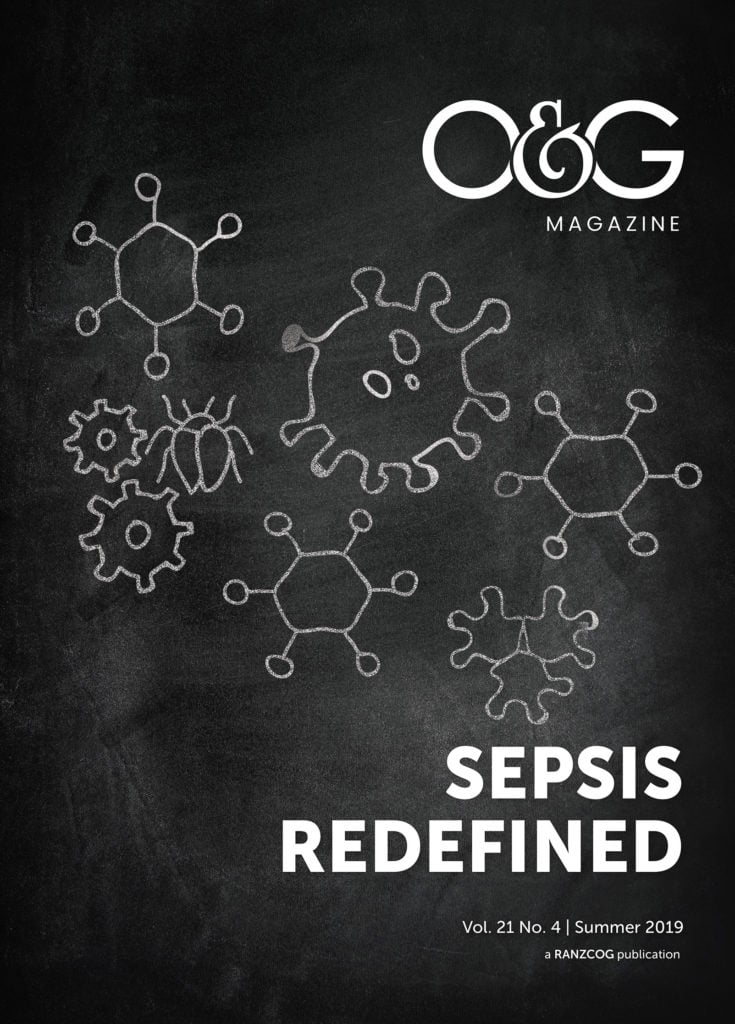Sepsis is a major cause of morbidity and mortality across the world. Over the last two decades, campaigns such as ‘SEPSIS KILLS’ by Clinical Excellence Commission in NSW and ‘Hour-1 bundle’ by Surviving Sepsis Campaign have focused on early recognition and management of sepsis to improve outcomes. However, despite advances and emphasis on early recognition and management, mortality from sepsis has remained high.
Introduction
As per the new definition, sepsis is as life-threatening organ dysfunction caused by a dysregulated host response to infection.1 What differentiates sepsis from infection is an aberrant or dysregulated host response along with organ dysfunction.
A systematic review has estimated the global incidence of sepsis and mortality to be 30 million episodes of sepsis and 6 million deaths per year, many of these preventable.2
The incidence and mortality rates of sepsis in Australia have been estimated from studies of adult patients in intensive care units (ICUs). The annual incidence of sepsis among adult patients in Australian and New Zealand ICUs were 77 cases per 100 000, with in-hospital mortality of 37.5 per cent.3
Patients with suspected infection, who are likely to have a prolonged ICU stay or to die in the hospital, can be promptly identified at the bedside with qSOFA: quick sepsis-related organ dysfunction assessment score.4 The score ranges from 0–3 points. The presence of 2 or more qSOFA points near the onset of infection is associated with a greater risk of death or prolonged ICU stay. qSOFA can predict sepsis mortality, with the odds of 5.6 for short-term mortality and 4.7 for long-term mortality.5
It uses three criteria, assigning one point for low blood pressure (SBP ≤ 100 mm Hg), high respiratory rate (≥ 22 breaths per min), or altered mentation (Glasgow coma scale < 15).6
Diagnosis of sepsis
Diagnosis of sepsis relies on a high index of suspicion based on a combination of symptoms, signs, laboratory tests, imaging modalities and recognition of organ dysfunction. None of these in isolation is definitive to make a diagnosis of sepsis.
It is important to recognise that critically ill, malnourished, immunosuppressed and elderly patients may not manifest typical signs of sepsis. Traditional symptoms and signs, such as hypo- or hyperthermia, tachycardia, tachypnoea, altered white blood cell count, are present in most critically ill patients and are unreliable in identifying patients with sepsis.
More than 170 biomarkers have been studied for use in evaluation of sepsis. Most biomarkers have limited ability to differentiate between sepsis and an inflammatory state. Currently, no biological molecular markers are recommended for use in the routine diagnosis or prognosis of sepsis or septic shock.7 The two most common biomarkers used in clinical practice are C-reactive protein (CRP) and procalcitonin (PCT).
CRP concentration increases 4–6 hours after the start of an infection and reaches a peak at 36–50 hours. It has low specificity (40–67 per cent) but high sensitivity (68–92 per cent). There is no threshold for CRP that helps to discriminate between infected and non-infected patients; however, elevated levels of CRP correlate with increased risk of organ failure and death.8 CRP remains useful to assess for sepsis in patients with neutropenia and also to assess for response to antibiotic therapy, as its concentrations fall in 48 hours post appropriate antibiotic therapy.
PCT is a prohormone of calcitonin, normally synthesised by the C cells of the thyroid gland. In sepsis, neuroendocrine cells in the lung and intestine produce PCT. The sensitivity and specificity of PCT vary widely between studies. Its levels rise in 3–6 hours and, as such, can be used for an early predictor of infection. Even though its use may have limited value in diagnosis of sepsis due to its low specificity, it is predominantly recommended for earlier discontinuation of antimicrobial therapy. A recent Cochrane review concluded that the use of PCT to guide initiation and duration of antibiotic treatment results in lower risk of mortality, lower antibiotic consumption, and lower risk for antibiotic-related side effects.9
Other potential biomarkers, such as IL-1, IL-6, IL-8, TNF-α, TREM -1, CTLA-4, have unproven use in diagnosis and prognosis of sepsis and are rarely available to clinicians at the bedside.
Early management of sepsis
Early diagnosis and prompt initial resuscitation and management are key to improving outcome. In the absence of definitive treatment for the dysregulated host response, the focus of management is early antimicrobial therapy, prevention of organ dysfunction by aggressive resuscitation and organ support.
The Surviving Sepsis Campaign is a global initiative to reduce mortality from sepsis by collaboration amongst various organisations. The campaign guidelines and bundles of care for prompt recognition and management of sepsis have been shown to reduce mortality. An ‘Hour-1 bundle’ was created by the campaign guidelines for early intervention in sepsis.10 This bundle focuses on five interventions to be initiated within the first hour of presentation: measuring lactate, obtaining blood cultures, administration of broad spectrum antibiotics, crystalloid fluid resuscitation for patients who are hypotensive and have elevated lactate levels and administration of vasopressors for maintaining a mean arterial pressure of 65 or more.11
Early resuscitation and haemodynamic stabilisation
Septic shock is a medical emergency and early effective resuscitation helps to improve outcomes. All patients with septic shock must be adequately oxygenated to correct hypoxaemia. Even though the type of intravenous fluids has been debated for many years, it is important to correct hypovolaemia rapidly. The surviving sepsis guidelines recommend an initial fluid resuscitation with a dose of 30 mL/kg of intravenous crystalloid fluid with a target of a mean arterial pressure (MAP) of 65 or greater to prevent organ dysfunction and this may be achieved by vasopressors in addition to fluid resuscitation.12
The early goal-directed therapy focused on timely optimisation of haemodynamic parameters by continuous monitoring of central venous oxygen saturation (ScvO2, >70%), central venous pressure (8–12 mm Hg), MAP (≥ 65 mm Hg), and urine output (>0.5 mL/kg/h) by interventions such as fluids, vasopressors, blood transfusions and inotropes.13 However, three subsequent international multicentre trials (Protocolized Care for Early Septic Shock [ProCESS], Australasian Resuscitation in Sepsis Evaluation [ARISE], and Protocolized Management in Sepsis [ProMISe]) have failed to show any significant survival benefit when this protocol was compared to usual care.14
Patients needing organ support or vasopressors require ICU admission. Patients with organ dysfunction, requiring high-dose vasopressors, usually undergo invasive haemodynamic monitoring in ICU to assess fluid status and cardiac output so as to intervene and optimise organ perfusion. Surviving Sepsis guidelines recommend noradrenaline and vasopressin as vasopressors for use in septic shock.15 Stress-dose steroids are used in patients with escalating dose of vasopressors as steroids have shown to have vasopressor-sparing effect, but no mortality benefit.16
Early antimicrobial therapy
Appropriate cultures, specifically blood culture, should be obtained if the culture can be performed in a timely manner so as to avoid delays in antimicrobial therapy. Surviving Sepsis guidelines recommend that intravenous antimicrobials are administered within the first hour after recognition of sepsis and septic shock.17 Studies have shown that each hour of delay in administration of antibiotics results in an increase of 7.6 per cent mortality for septic shock.18 It is recommended to use empiric broad-spectrum therapy with one or more antimicrobials to cover both Gram-positive and Gram-negative bacteria and, if indicated, against fungi and, rarely, viruses. Local and national guidelines should be sought for specific antimicrobial therapy, depending on source, to avoid inappropriate broad-spectrum antibiotic that may lead to future resistance.
Source control
Identifying source of infection is of crucial importance and additional investigations such as imaging (x-ray, computed tomography, ultrasonography) and acquisition of further diagnostic samples (such as broncho-alveolar lavage, aspirating fluid collections or joints) may be needed.
Source control must be undertaken in a timely manner. Potentially infected vascular access devices, or other infected implantable devices/hardware, should be removed. Intervention, such as abscess drainage (including thoracic empyema and joint), percutaneous nephrostomy, soft tissue debridement or amputation (and cholecystostomy, if indicated), must be considered for the infection control.
Organ support
Patients with sepsis and septic shock usually have organ dysfunction that may need monitoring and support in ICU, including: mechanical ventilation for respiratory failure, continuous renal replacement therapy for renal failure and inotropic therapy for septic cardiomyopathy.
Conclusion
For critically ill patients with sepsis or septic shock, time is of the essence. In all cases, the emphasis must be on early diagnosis and intervention for rapid infection control and organ support to prevent organ failure and death. Increased awareness of sepsis, establishment of local protocols and improved compliance with the Hour-1 sepsis bundle is of paramount importance to improve patient outcomes.
References
- Singer M, Deutschman CS, Seymour CW, et al. The Third International Consensus Definitions for Sepsis and Septic Shock (Sepsis-3). JAMA. 2016;315(8):801-10.
- Fleischmann C, Scherag A, Adhikari NKJ, et al. Assessment of global incidence and mortality of hospital-treated sepsis: current estimates and limitations. Am J Respir Crit Care Med. 2016;193:259-72.
- Finfer S, Bellomo R, Lipman J, et al. Adult-population incidence of severe sepsis in Australian and New Zealand intensive care units. Intensive Care Med. 2004;30:589-96.
- Singer M, Deutschman CS, Seymour CW, et al. The Third International Consensus Definitions for Sepsis and Septic Shock (Sepsis-3). JAMA. 2016;315(8):801-10.
- Tan TL, Tang YJ, Ching LJ, et al. Comparison of Prognostic Accuracy of the quick Sepsis-Related Organ Failure Assessment between Short- & Long-term Mortality in Patients Presenting Outside of the Intensive Care Unit: A Systematic Review & Meta-analysis. Sci Rep. 2018;8(1):16698.
- Singer M, Deutschman CS, Seymour CW, et al. The Third International Consensus Definitions for Sepsis and Septic Shock (Sepsis-3). JAMA. 2016;315(8):801-10.
- Biron BM, Ayala A, Lomas-Neira, JL. Biomarkers for Sepsis: What Is and What Might Be? Biomark Insights. 2015;10(Suppl 4):7–17.
- Lobo SM, et al. C-reactive protein levels correlate with mortality and organ failure in critically ill patients. Chest. 2003;123(6):2043-9.
- Schuetz P, Wirz Y, Sager R, et al. Procalcitonin to initiate or discontinue antibiotics in acute respiratory tract infections. Cochrane Database Syst Rev. 2017;(10):CD007498.
- Rhodes, A, Evans, LE, Alhazzani, W, et al. Surviving Sepsis Campaign: International Guidelines for Management of Sepsis and Septic Shock: 2016. Intensive Care Med. 2017;43(3):304-77.
- Levy, MM, Evans, LE, Rhodes, A. The Surviving Sepsis Campaign Bundle: 2018 update. Intensive Care Med. 2018;44(6):925-8.
- Levy, MM, Evans, LE, Rhodes, A. The Surviving Sepsis Campaign Bundle: 2018 update. Intensive Care Med. 2018;44(6):925-8.
- Rivers E, Nguyen B, Havstad S, et al. Early goal-directed therapy in the treatment of severe sepsis and septic shock. N Engl J Med. 2001;345:1368-77.
- Rowan KM, Angus DC, Bailey M, et al. Early, goal-directed therapy for septic shock: A patient-level meta-analysis. N Engl J Med. 2017;376:2223-34.
- Rhodes, A, Evans, LE, Alhazzani, W, et al. Surviving Sepsis Campaign: International Guidelines for Management of Sepsis and Septic Shock: 2016. Intensive Care Med. 2017;43(3):304-77.
- Rhodes, A, Evans, LE, Alhazzani, W, et al. Surviving Sepsis Campaign: International Guidelines for Management of Sepsis and Septic Shock: 2016. Intensive Care Med. 2017;43(3):304-77.
- Rhodes, A, Evans, LE, Alhazzani, W, et al. Surviving Sepsis Campaign: International Guidelines for Management of Sepsis and Septic Shock: 2016. Intensive Care Med. 2017;43(3):304-77.
- Kumar A, Roberts D, Wood KE, et al. Duration of hypotension before initiation of effective antimicrobial therapy is the critical determinant of survival in human septic shock. Crit Care Med. 2006;34(6):1589-96.







Leave a Reply